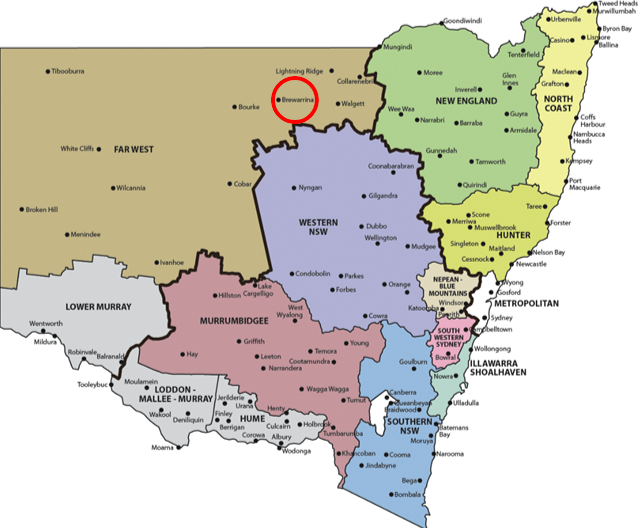
Emma Knowles from Stone of Arc was privileged to be working with Ngemba Traditional owner Trish Frail on an exhibit for the ICOMOS General Assembly 2023 at the International Convention Centre on Darling Harbour, Sydney.

The Ngunnhu (fish traps)
The Ngunnhu are located in the Barwon river at Brewarrina, a small rural town in north-west NSW, about 10hrs drive from Sydney.
The Ngunnhu, believed to be around 40,000 years old and the oldest human-made structure on the planet.
These fish traps evidence the incredible ingenuity of the Ngemba, the way the stones were engaged and locked together to withstand the force of the river without interrupting its flow or the spawning of fish (Guya).
In Aboriginal lore, the Creator; Baiami and his two sons, Booma-coma nowi and Ghinda-inda-mui helped the Ngemba collect scattered stones and boulders and lay them out in a way that created the great fish net, first the boulders then the smaller stones. The Ngunnhu are a series of traps and storage containers that can be opened at either end according to need.


The traps were allocated to different families to use and look after, though other clans were permited to access the Ngunnhu and every year a huge corroboree would be held there to deal with cultural matters.
The Ngemba enter the fish traps and storage areas to catch the fish by hand or with spears as well as to carry out repairs during dry periods.
Although white settler activities (paddle steamers, cattle crossings, weirs, stone removal, cold water discharge and genocide) have caused significant damage to the Ngunnhu and diminished the skills required to maintain them, this practice continues today.

In Gundahbooka, a 1.5hr drive (30hr walk) from Brewarrina, there’s an ancient map of the Ngunnhu in a rock painting, showing a fish swimming towards the opening.
Gundahbooka is Trish Frail’s country and as a girl she remembers asking her mother how people could see the guya, given the water is so muddy, and her mother recalling a time when the water was clear, before the introduction of invasive carp who feed on the bottom of the river stirring up mud and sediments, destroying aquatic plants and damaging the rivers eco-system.
The Exhibit
Over the course of the 5-day exhibit a singular fish trap was constructed alongside a section of
conventional Yorkshire dry stone wall to allow visitors the opportunity to observe the similarities at play.

Most people think of structures in Europe, South America or Africa when they think of Dry Stone ingenuity, but the exact same principles were applied in the construction of the Nghunnu, which pre-date any other human-made stone structure on earth by an estimated 35,000 years - and are in a river!

The effectiveness, ecological synchronicity and immense longevity of these fish traps is testament to the advanced intelligence and engineering capacity of Ngemba people, from an incredibly long time ago.
This exhibit celebrated and highlighted the remarkable, historically significant Ngunnhu to thousands of visitors, on an international stage. Stone of Arc continues to support Ngemba-led heritage activities and assist with the reacquisition of clan skills so that the Ngunnhu can be restored, maintained and suitably protected into the future.